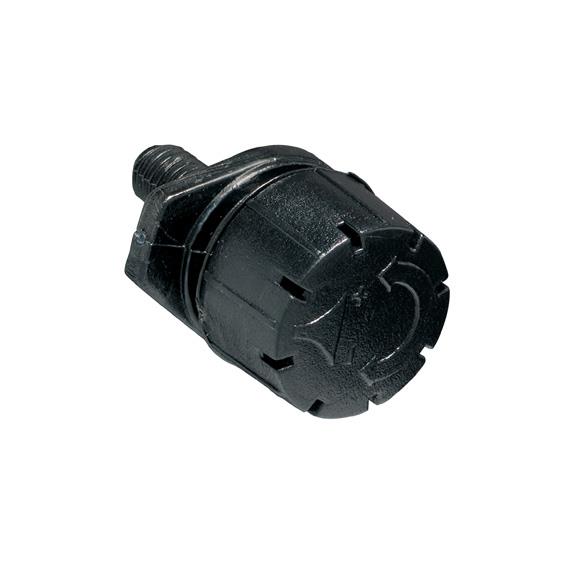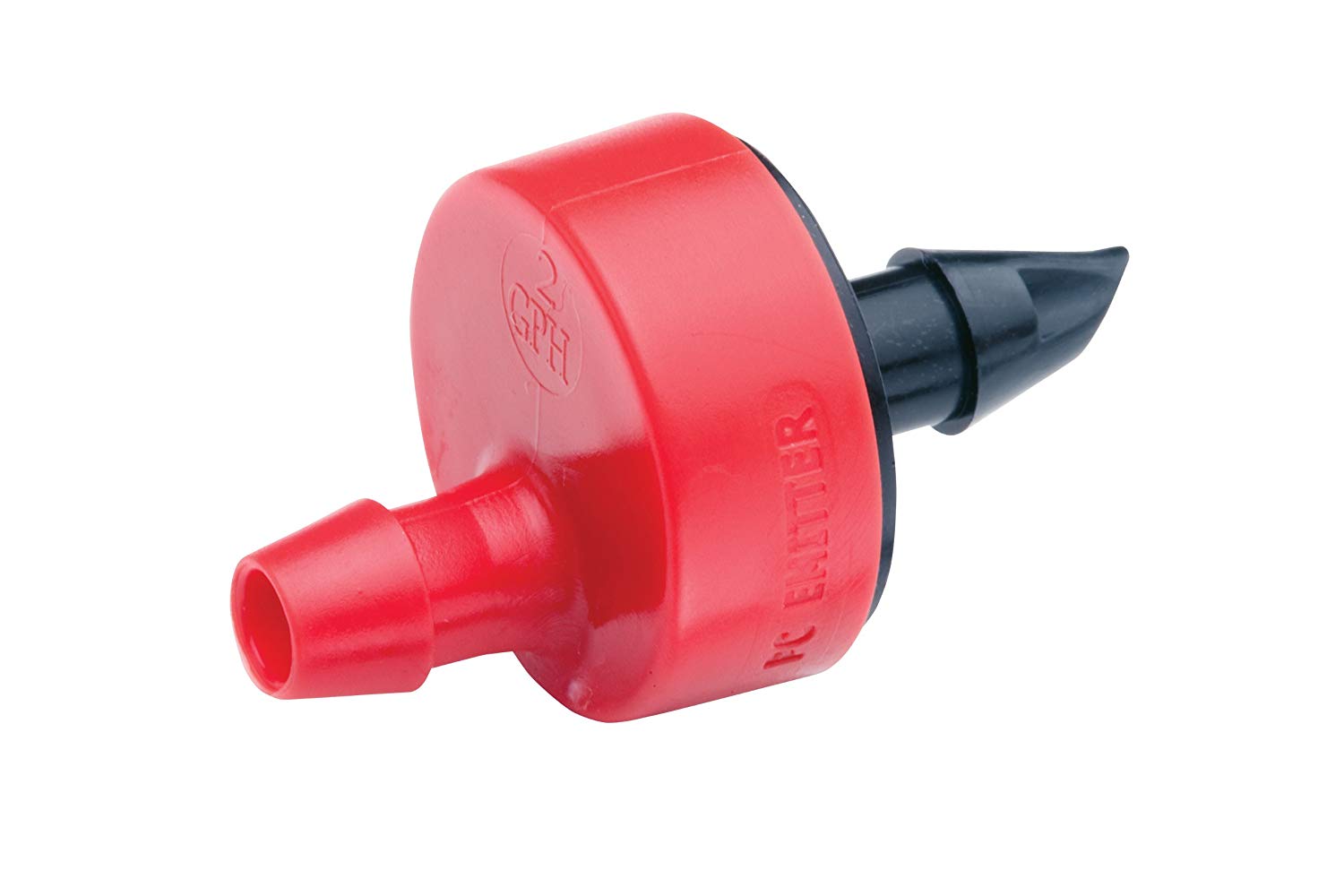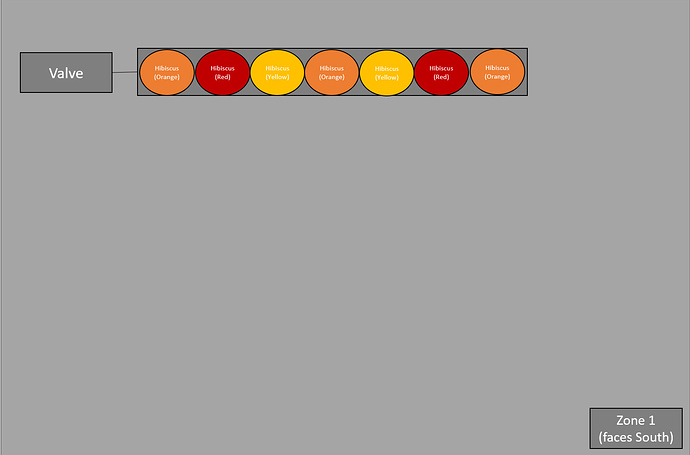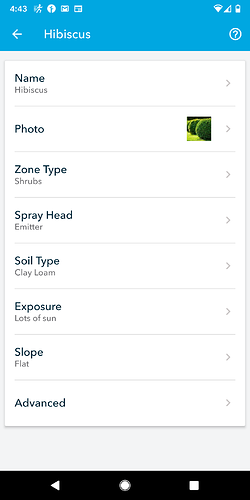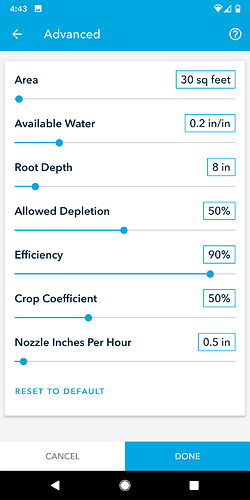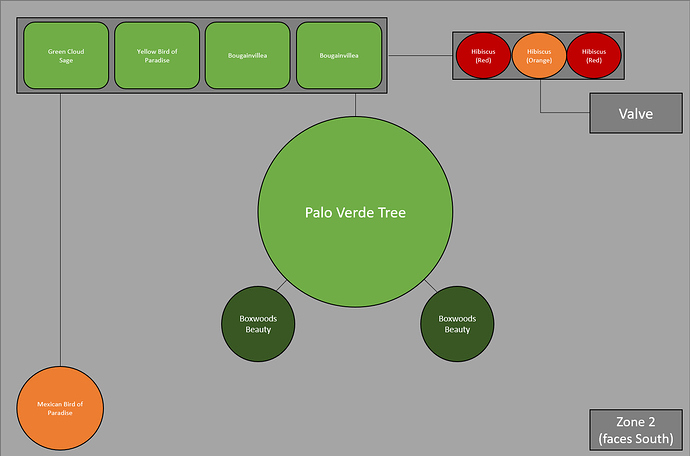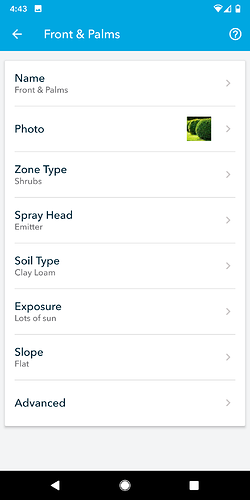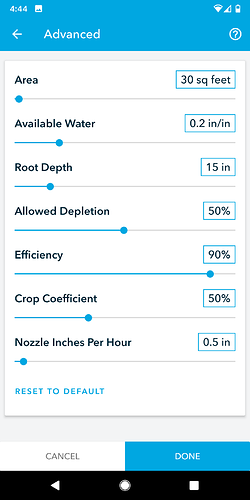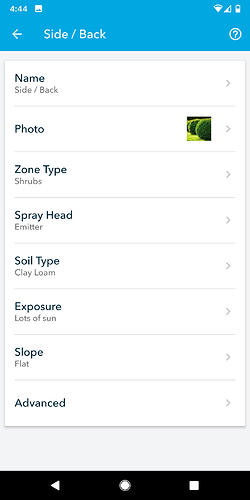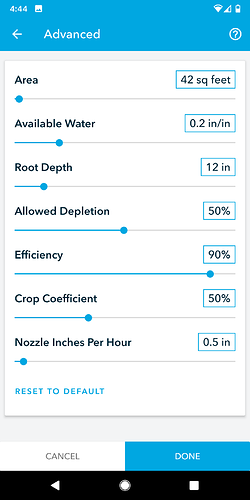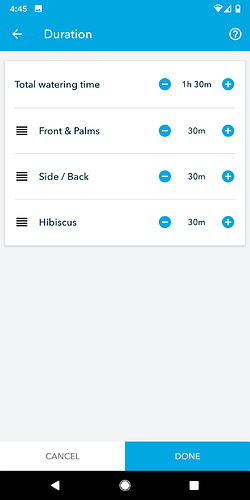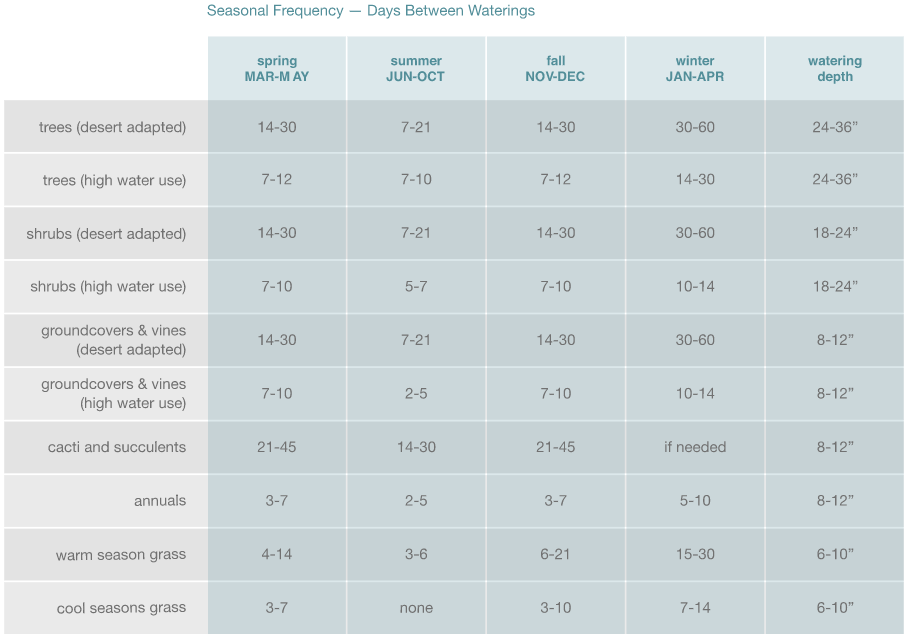@tmcgahey & @azdavidr - hoping you guys can chime in here.
Apologies for the small novela here, but I’m trying to be as thorough as I can with the relevant details.
Some background - I bought this house in Tempe almost 4 years ago from a little old lady who took pretty good care of a lot of various plants around the yard. After I tried to take over the maintenance myself, I eventually noticed that some of the plants weren’t doing too well. There was an antiquated Rainbird system in the garage, but I suspect that it really hadn’t been doing its job in quite some time. I also suspect that the lady was just manually watering everything on a continual basis, since she didn’t have much else to do. When I bought the house, I replaced the Rainbird with a Rachio 2. I tried configuring what I thought would be correct settings in the Flex program. These earlier details aren’t relevant at this point because much has changed…
So, fast forward to about a year ago. Zone 1 (as depicted in the images below) was a whole row of sage. Turns out that the valve in this zone was leaking and just constantly flooding the small area with water under the soil. This was confirmed by an audit that the city of Tempe’s water service did. About six months later, I had all the dead sage pulled out and the area was replaced with 3 different varieties of Hibiscus (7 plants in all). At the same time, I had all three zones replaced with all new irrigation lines. Each plant was set up with an adjustable emitter like this -
Now, admittedly, the landscapers who installed the lines aren’t quite the “professional variety” and I’m sure they had no idea what to actually set the GPH’s to. Also admittedly, neither did I. So I just set them to put out what looked like a reasonable amount of water and I left things as is on the Flex config. Suffice it to say, the results were all over the place and my watering was definitely not right and I moved to a Scheduled Daily config because things were dying.
I just wanted to provide some color about some of the previous issues, but let’s ignore the rest of the earlier details and focus on how things are now.
Today, I currently have three zones, as depicted in the attached images. Every plant in each zone is on a drip line with emitters/dripper heads. On the suggestion from several “irrigation” vendors, I was planning on swapping out the adjustable heads to static GPH heads like this -
Zone 1 - Front Yard / Hibiscus. Full sun, faces South.
~6 months ago there were 7 newly planted hibiscus placed here. The first five plants have since died (I suspect due to over watering) and will be replaced with new hibiscus. The last two plants in this row seem to be thriving just fine and are still on the adjustable emitters. I’m not sure exactly how many GPH they’re currently set at, but regardless, I had planned on putting all of the hibiscus on 2 GPH heads. However, if this is not correct, I am open to alternatives. Also to note, as I (now) understand, with these being newer plants, root depth configuration for this zone will be needed.
Here are my settings as of today for Zone 1 -
Zone 2 - Front Yard / Mixed trees, shrubs and plants. Partial sun (due to Palo Verde canopy), faces South.
The three hibiscus are new (~3 months), the rest have been there for probably 10 years or longer. I have replaced the adjustable emitters that were originally on the hibiscus with 2 GPH heads. The rest are on the adjustable emitters, but can be changed over as needed upon suggestion. I don’t have any water going to the Palo Verde tree (which has a rather large canopy) because several irrigation resources that I’ve spoken to have said that it really doesn’t need a supplemental water supply and with our monsoons, it will get enough to hold it over (again, whether this is correct or not, is pure speculation at this point). Each of the plants here seem to be doing ok, but I’m sure they could use some dialing in with the watering times and configs. The Bougainvilleas have not flowered at all since I had them cut back last year, and based on my research, they will not flower when they have too much water. I’ve read that to get them back to flowering (like they were when I bought the house), I need to secure their current water source, as it’s too much.
Here are my settings as of today for Zone 2 -
Zone 3 - Back Yard / Mixed trees, shrubs and plants.
Like the other zones, the hibiscus are new(er). The pink looks like it has died (though my landscaper says that it’s not completely dead…yet). Again, my guess is due to over watering. The orange hibiscus is acting very weird. Its leaves are curled inwards and dried/shriveled, yet still seems to be growing. I can’t figure out what this is from. The two red ones on either side of it are flourishing just fine (though no flowering, probably due to the current heat), but their leaves and stalks are nice and sturdy. These 3 hibiscus have now been placed on the 2 GPH drip emitters, everything else is still on the adjustable emitters.
Here are my settings as of today for Zone 3 -
And here is what my current “Daily” config is at -
Over all, I feel like I am watering a LOT, and yet, the plants don’t look as good as they’re supposed to. I’m looking for a little guidance to help me get my black thumb under control and have a nicer looking yard; hopefully by leveraging a more efficient Flex schedule appropriate for the desert climate here.
Again, apologies for the length and hopefully this doesn’t fall under TL:DR.
Thank you.

